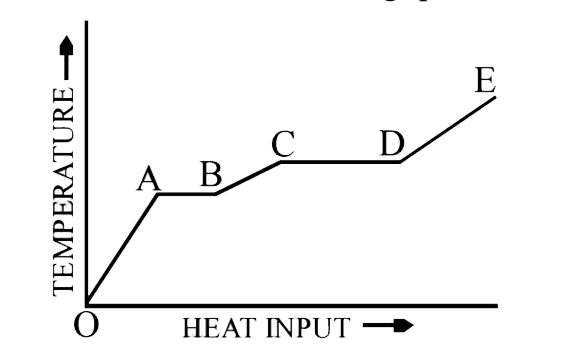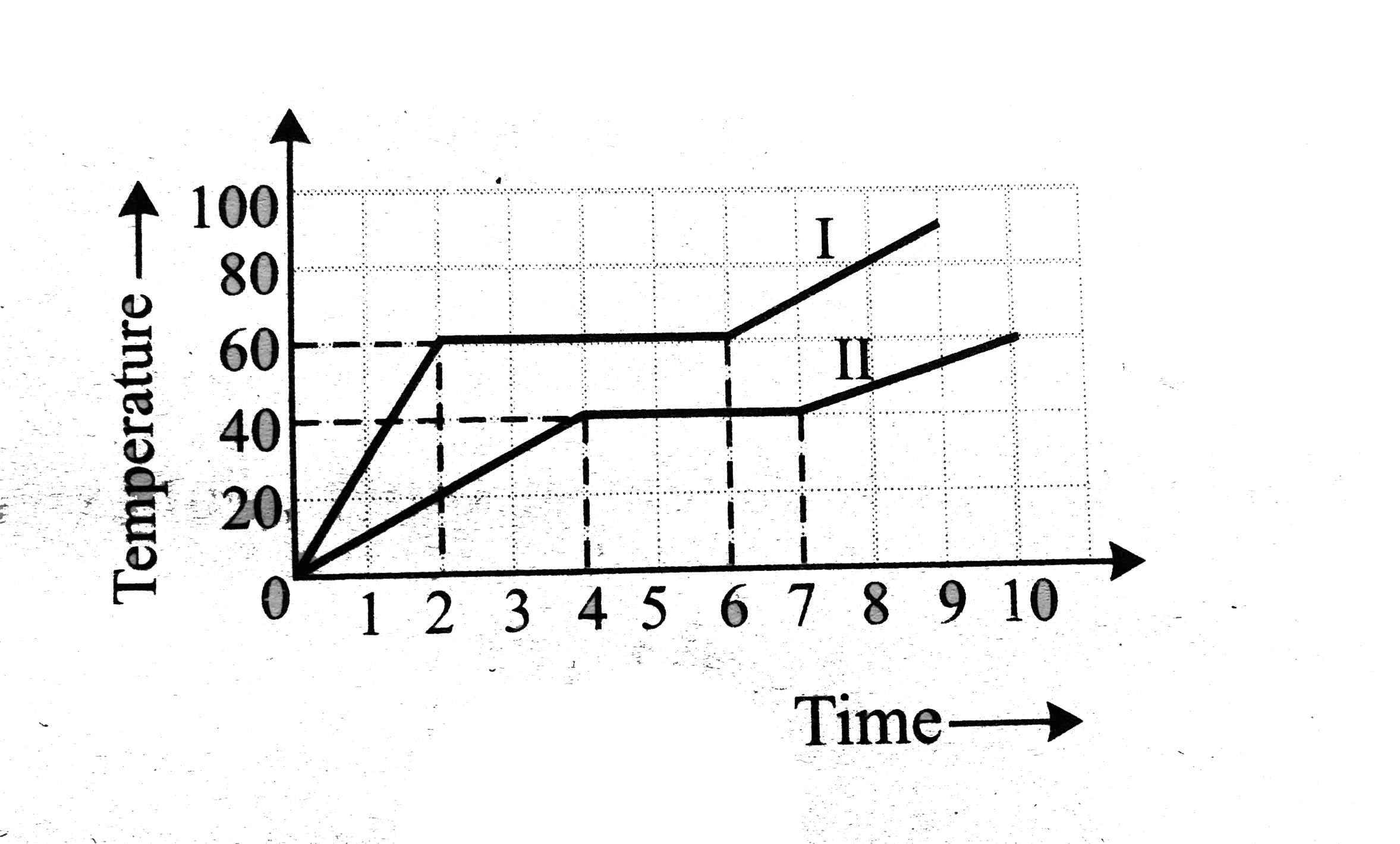Complete Solutions to EXAMPLE of chapter HEAT AND CALORIMETRY of Class 11 book with complete answers and questions
| Class 11 | PHYSICS |
| Chapter | HEAT AND CALORIMETRY |
| CP SINGH | EXAMPLE |
| Number Of Questions | 15 |
| Academic Year | 2023-24 |
When 300 J of heat is added to `25 gm` of sample of a material its temperature rises from `25^(@)C` to `45^(@)C`. The thermal capacity of the sample and specific heat of the material are respectively given by
View SolutionThe temperature of equal masses of three different liquids A,B and C are `12^@C, 19^@C and 28^@C` respectively. The temperature when A and B are mixed is `16^@C` and when B and C are mixed it is `23^@C`. What should be the temperature when A and C are mixed?
View SolutionA lead bullet penetrates into a solid object and melts. Assuming that 50% of its kinetic energy was used to heat it, calculate the initial speed of the bullet. The initial temperature of the bullet is `27^@C` and its melting point is `327^@C`. Latent heat of fusion of lead `= 2.5 xx 10^4 J//kg` and specific heat capacity of lead `=125 J//kg.K`.
View SolutionA lead ball at `30^@C` is dropped from a height of `6.2km`. The ball is heated due to the air resestance and it completely melts just before reaching the ground. The molten substance falls slowly on the ground. Calculate the latent heat of fusion of lead. Specific heat capacity of lead `=126 J//Kg-^(@)C` and the melting point of lead `=330^@C`. Assume that any mechanical energy lost is used to heat the ball.
View SolutionA piece of iron of mass `100g` is kept inside a furnace for a long time and then put in a calorimeter of water equivalent `10g` containing `240g` of water at `20^(@)C`. The mixture attains an equilibrium temperature of `60^(@)C`. Find the temperature of the furnace.
Specific heat capacity of iron `= 470J kg^(-1).^(@)C^(-1)`
View SolutionA solid material is supplied with heat at a constant rate. The temperature of the material is changing with the heat input as shown in the graph in figure. Study the graph carefully and answer the following questions:

(i) What do the horizontal regions AB and CD represent?
If CD is equal to 2AB, what do you infer?
What does the slope of DE represents?
The slope of OAgtthe slope of BC. What does this indicate?
View Solution
Two bodies of equal masses are heated at a uniform rate under identical conditions. The change in temperature in the two cases in shown graphically. What are their melting points?
Find the ratio of their specific heats and latent heats.
View SolutionCalculate the amount of heat required to convert 10 g ice at `-10^@C` into steam at `120^@C` at normal pressure. If heat is supplied uniformly at the rate `50cal//s`, sketch variation temperature with time
View SolutionA 5 g piece of ice at `-20^@C` is put into 10 g of water at `30^@C`. Assuming that heat is exchanged only between the ice and water. The final temperature of the mixture.
View SolutionFour `2 cmxx2 cmxx 2cm` cubes of ice are taken from a refrigerator and put in `200ml` of a drink at `10^(@)C`
(a) Find the temperature of the drink when thermal equilibrium is attained in it.
(b) If the ice cubes do not melt completely, find the amount melted.
Assume that no heat is lost to the outside of the drink and that the container has negligible heat capacity. Density of ice `= 900 kg m^(-8)` , density of the drink `= 1000kgm^(-8)`, specific heat capacity of the drink ` = 4200 J kg^(-1)K^(-1)` ,latent heat of fusion of ice `= 3.4 xx 10^(6)Jkg^(-1)`
View Solution(a) The temperature of 100 g of water is to be raised form `10^@C` to `40^@C` by adding steam at `100^@C` to it. Determine the mass of the steam required for this purpose.
(b) How much steam at `100^@C` will just melt 2700 g of ice at `-10^@C`?
View SolutionSteam at `100^@C` is allowed to pass into a vessel containing `10g` of ice and 100 g of water at `0^@C` until all the ice is melted and the temperature is raised to `50^@C`. Neglecting water equivalent of the vessel and the loss due to radiation etc. Calculate how much steam is condensed.
View Solution`1kg` ice at `0^(@)C` is mixed with `1kg` of steam at `100^(@)C`. What will be the composition of the system when thermal equilibrium is reached ? Latent heat of fusion of ice `= 3.36xx 10^(6)J kg^(-1)` and latent heat of vaporization of water `= 2.26 xx 10^(6)J kg^(-1)`
View SolutionA mixture of 250 g of water and 200 g of ice at `0^@C` is kept in a calorimeter which has a water equivalent of 50 g. If 200 g of steam at `100^@C` is passed through this mixture, calculate the final temperature and the weight of the contents of the calorimeter.
View SolutionAn ice cube of mass 0.1 kg at `0^@C` is placed in an isolated container which is at `227^@C`. The specific heat s of the container varies with temperature T according to the empirical relation `s=A+BT`, where `A= 100 cal//kg.K and B = 2xx 10^-2 cal//kg.K^2`. If the final temperature of the container is `27^@C`, determine the mass of the container.
(Latent heat of fusion for water = `8xx 10^4 cal//kg`, specific heat of water `=10^3 cal//kg.K`).
View Solution
EXAMPLE questions and complete solutions for chapter HEAT AND CALORIMETRY of CP SINGH PHYSICS (HINGLISH) of Class 11